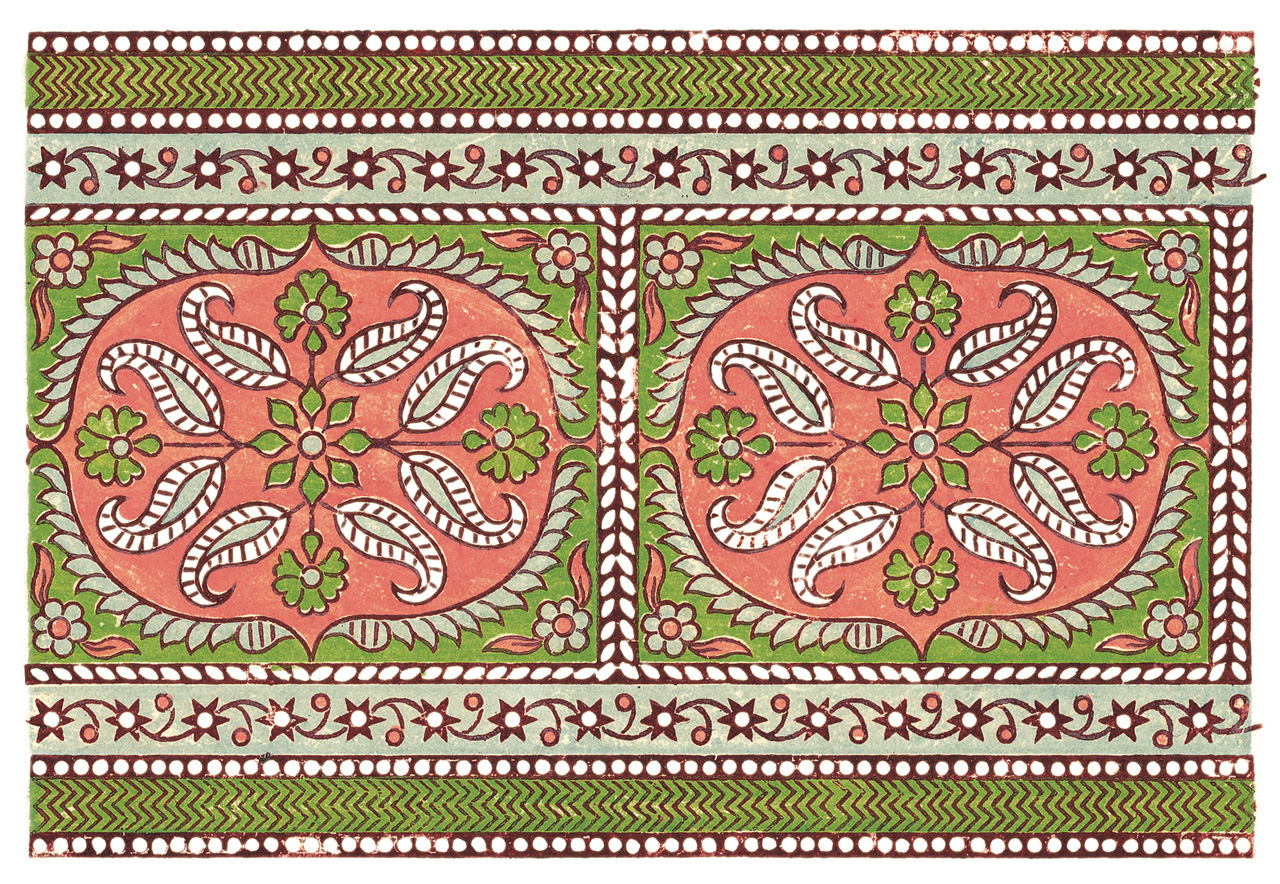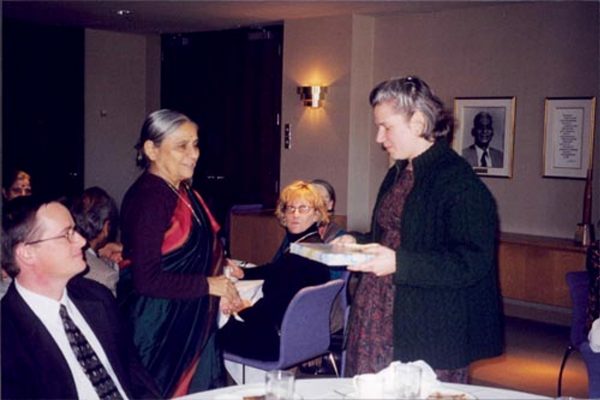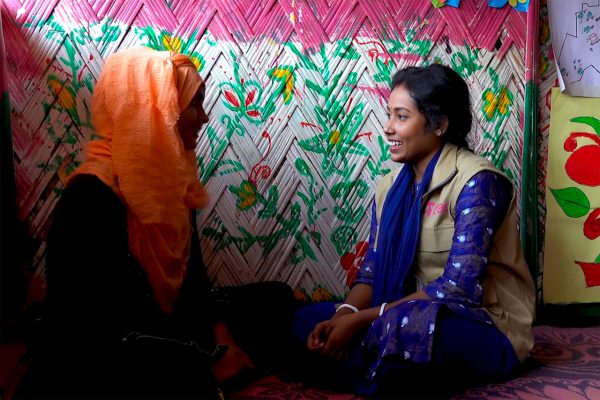Jamdani and Aarong: A love affair spanning half a century
Reading Time: 4 minutes
A jamdani saree graced the French Riviera this month, as actress Azmeri Haque Badhon represented Bangladesh at the Cannes Film Festival. While jamdani is a symbol of sophistication, beauty and grace, and has always travelled across the world, the story behind the weaving technique is not well known – the art of weaving jamdani almost became extinct just decades ago.
The word ‘Jamdani’ is derived from the Persian words ‘jam’ (floral) and ‘dani’ (vase), and refers to an intricate traditional weaving technique usually done on a handloom, using fine silk or cotton. Jamdani is a time-consuming and labour-intensive form of weaving because of the richness of its motifs (usually based on flowers or plants), which are created directly on the loom, and often made into sarees.
Jamdani is recognised by UNESCO and included on the Representative List of the Intangible Cultural Heritage of Humanity now, but it was under threats just decades ago. In a survey conducted by BRAC in 1978 in Dhaka’s Demra area, it was found that families who had been making jamdani sarees for generations were no longer practising the craft.
Last week, when Azmeri charmed the world in a jamdani saree, questions came from across the world: Who designed this graceful piece of clothing, and what is its story?

The story behind ‘that saree’
Azmeri’s saree was designed by Aarong, the biggest lifestyle brand in Bangladesh. Aarong began as a means to an end for a quiet organisation fighting to uphold the dignity of people living in poverty – and out of a need to ensure that craftspeople were paid fairly, so that handmade products remained financially viable.
Today, holding steadfast to its original mission, Aarong supports the livelihoods of 65,000 rural artisans and handicraft producers, most of whom are women. This includes 35,000 independent small, micro and cottage producers, from whom Aarong sources everything from hand-carved wooden chairs to hand-forged gold bracelets.
In a country known for large factories, the majority of Aarong’s products are made in hundreds of small workshops, cottage industries, homes and centres spread across Bangladesh, mostly in climatically-vulnerable areas to provide women living in poverty with income generating opportunities.
Bangladesh’s handloom industry has enjoyed a symbiotic relationship with Aarong. In areas such as Chapainawabganj and Norshindi, in rural Bangladesh, some weaver communities are entirely dependent on Aarong’s fabric consumption for survival. In a single year, this can amount to over 7 million yards of hand-woven fabric – enough to make over a million sarees like Azmeri’s.
Read more: Aarong: Crafting hope, weaving dreams
Aarong’s contemporary designs appeal to both the East and the West. Sarees like Azmeri’s are traditionally woven in the finest silk, but paired with accessories that would satisfy modern taste. Their products meet demands across a variety of ages and styles, while staying true to the rich cultural traditions of Bengal.

Going back through history: How was the jamdani revived from almost extinction?
That 1978 BRAC survey in Demra was a watershed moment in both jamdani and Aarong’s history. In the words of the visionary behind Aarong, Sir Fazle Hasan Abed, “There are legends about the jamdani craft of Demra. It was believed that the jamdani worn by the daughters of the Mughal emperors was so finely woven that it could be inserted through a ring. But craftspersons were leaving the craft and switching to other professions. We thought, ‘How could we bring this back?’”
Read more: Jamdani treasure hunt across three continents
Jamdani sarees from the last 200 years were preserved across the world, in museums from Ahmedabad to Chicago. “We set off to different museums, took photos of the jamdanis which remained and brought them back as slides. With those, we recreated 300 jamdani designs,” said Sir Fazle.
There was huge interest from individuals and organisations and a lot of projects dedicated to jamdani. In 1981, jamdani made its comeback to the country of its origin in the first-ever jamdani exhibition organised by Aarong at Shilpakala Academy in Bangladesh.
Not just jamdani
“Another art form which was on the verge of going extinct was the Nakshikatha. The motif and the stitches that were crafted in our country over the last 300 years were lost. So we began looking for them,” Sir Fazle said. Like the jamdani, the nakshikathas were also preserved in some of the world’s most famous museums, in Boston and Chicago.
“We brought back images, and gave them to artists who reproduced the designs. They were then given to artisans, and these women reproduced them on clothes.”
Sir Fazle recalled: “I went to Jamalpur in 1977 with Ayesha Abed. At that time our poverty alleviation programme was operating there. When we were discussing how to create employment for women, a BRAC staff member said that a couple of women did katha stitch very well. I asked him to bring samples of some of the work”.
“The katha he brought was a beautiful, intricate design made by a woman who lived there. She went on to lead a group of ten others who learnt this craft from her, creating many more nakshikatha artists. Now about 1,100 women in Jamalpur are skilled artisans of kathas. All were trained on the job and have become proficient. The Jamalpur region was once famous for its nakshikatha craft, but they lost that glorious tradition. With some guidance and support, the women of Jamalpur have brought back their lost heritage”.

The jamdani and nakshikatha paved the way for how Aarong would chart its course in preserving the heritage of Bangladesh – celebrating heritage through modern fashion. Through their work, Aarong set trends, and ushered in a new era of heritage fashion.
“Aarong has gained a reputation for preserving our heritage in both our country and abroad. This was possible due to timely decisions and BRAC’s institutional advice and support. Jamdani‘s motif catalogue is quite rare; however, various books on jamdani weaving have been carefully preserved in the archives of Aarong Design Studio” said Tamara Abed, managing director of BRAC Enterprises.
Read more: How BRAC Enterprises became sustainable solutions
Without the interventions in the late 1970s, it is unlikely that we would see a jamdani on a red carpet today. According to Sir Fazle, “The variations we see in jamdani designs today would not have been possible. The motifs we rescued are no longer likely to be lost. The same goes for nakshikatha. Aarong has contributed a lot to the nakshikatha now being placed in many homes as an art form”.

Preserving heritage: An endless mission
There is no end to the motifs and designs indigenous to Bangladesh. There are countless designs for desserts such as sandesh and traditional cakes called pitha – almost every item you can name once probably had intricate designs on it.
Aarong has continued to research and uncover traditions in the region, amassing lost motifs and designs. A few collectors got together and collected about 300 designs scattered in different parts of the country. Many of those designs can be found today on block prints.

Sir Fazle believed that crafts need not be brought from abroad, given the vibrant tradition of handicrafts here in Bangladesh. And, as we saw at Cannes, there is still plenty of demand for tradition.
Asif Mustafa is a Communications Specialist; Luba Khalili is Lead Content Strategist, Sarah-Jane Saltmarsh is Head, Programme and Enterprise Communications; and Shajedur Rahman is Head, Leadership Communication and Employee Engagement at BRAC Communications.





